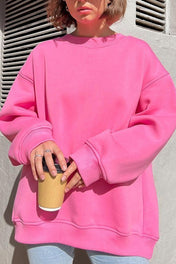Have you ever wondered what material is ramie? Or what is ramie made of? Ramie is a linen-like fiber which is classified as a cellulose fiber and is made from the stalks of the Chinese nettle plant.
What is Ramie Fabric?
Ramie is an eco friendly fabric and the highly sustainable fiber is an alternative to synthetic fabrics. It is naturally resistant to mold, mildew and bacteria, as well as light damage and rot and insect attacks. It can be healthily grown without any pesticides, herbicides and chemicals.
Ramie is made from the stalks of flowers and plants and is a chic vegan silk alternative and is lighter and airier. It is able to maintain shapes well.
Ramie fabric is gaining popularity in the fashion industry as a sustainable eco fiber. Ramie is also known as China grass, grass linen, rhea and grass cloth. It can be grown without harmful chemicals as it can naturally resist various pests and diseases, making it a typical environmentally green crop.

Ramie is a flowering plant and in the nettle family, Urticaceae. The scientific name is Boehmeria Nivea. Stinging nettle is also called European nettle and you can read more about the production of nettle fabric in this post on Innovative Textile Solutions.
What material is ramie? It is a vegetable fiber that is noted for its length and toughness. The word ramie comes from the Malay word rami. Ramie is classified as a cellulose fiber, and although Ramie is not a very common fabric, it is considered sustainable.
Ramie Cultivation
Ramie is best grown in loamy and sandy loam soil with a Ph of between 5.5 and 7.0. A warm humid climate is essential for cultivating ramie. The annual rainfall needs to be between 1,500mm and 3,000mm and well distributed throughout the year. Optimum temperature for growing ramie is 25 degrees Celsius and 35 degrees Celsius.
The herbaceous perennial grows 1 to 2.5 meters tall and is native to eastern Asia. The perennial plant grows like a shrub and is also called Chinese nettle. It produces numerous unbranched stems from underground rhizones and has a crop life of 6 to 20 years.

There are two types of ramie:
- True ramie or China grass, is also called white ramie or Chinese plant. The leaves are heart shaped and the underside is white, with dense, small hairs that give it a silvery appearance. The difference to stinging nettles is that the hairs do not sting.
- A second type of ramie is known as green ramie or rhea and is generally believed to have originated in the Malay Peninsula. The leaves are smaller and green on the underside and seems to be better suited for tropical conditions.
Ramie is one of the oldest fiber crops and have been used for fabric production for more than 6,000 years. It is a bast fiber and for textile production, the fiber from the inner bark, or phloem, of the vegetative stalks, are used, rather than the woody stem or bark.
Harvesting Ramie
Ramie is normally harvested 2 to 3 times per year, but it can be harvested up to 6 times per year if the growing conditions are good. Ramie is different to other bast crops in that it requires chemical processing to degum the fiber.
Harvesting of ramie takes place when the plant starts flowering, or just before that. Flowering is a signal that the plant is at both the maximum fiber content and also at a decline in growth.
- Stems are harvested by bending the stem or cutting just above the lateral roots. This enables the core to be broken and the cortex can be stripped from the plant in situ.
- The stems are decorticated while the plants are still fresh. Plants will dry out and the bark will be difficult to remove if decortication is not done while the plants are fresh.
- The bark ribbon is then dried as quickly as possible to prevent attacks from bacteria and fungi.
Extraction of Ramie Fiber
The process of transforming the ramie fiber into a textile, is similar to the process that is used to produce linen fabric from flax. You can discover more about the process in this post on linen production and flax cultivation.

Ramie fiber is very fine, like silk, and naturally white in color. Fiber extraction takes place in three stages:
- The cortex or bark is mechanically removed or it is done by a machine. This process is called decortication.
- The cortex is scraped to remove most of the outer bark, the parenchyma, in the bast layer, as well as some of the pectins and gums.
- The residual cortex material is washed, dried and then degummed to extract the spinnable fiber.
Ramie is often blended with other natural fibers and the fabric will resemble anything from fine linen to coarse canvas.
Wet spinning produces a high luster, softer yarn. Dry spinning results in a hairier, harsher yarn.
The several steps that involve scraping, pounding, heating, washing or exposure to chemicals, makes the extraction and cleaning of the fiber, and what is ramie fabric, expensive. This has given what material is ramie, limited acceptance to be used in textiles. Most of these steps are all needed to separate the raw fiber from the adhesive resins and gums.
History of What Material is Ramie
For many centuries ramie has been grown in China, and it is known that farmers used the fiber to weave clothing in ancient China. It is possible that it was used in Egypt to wrap mummies. This would make sense as ramie has a resistance to mildew and bacteria, which is appropriate for mummy wrapping.
In the late 1930s Brazil started producing what is ramie fabric, and production peaked in 1971. Production since then has steadily declined, mainly because of competition from alternative crops like soybeans and also synthetic fibers.
Producers: China is the main producer of ramie and they mainly export to Japan and Europe. Taiwan, India, the Philippines, South Korea, Thailand and Brazil are the other producers. Very little ramie is available on the international market, as it is mainly used in the domestic markets of the countries that grow ramie.
Properties of Ramie
So what is ramie made of? Ramie is a cellulosic fiber and therefore has many of the properties of cellulose fabric. Cellulose fibers are discussed in this post on Viscose Fabric – the textile made from cellulose.

- Ramie is one of the strongest natural fibers and is even stronger when it is wet and eight times stronger than cotton.
- It introduces a silky luster to the appearance of fabric.
- Fibers are uneven, which gives ramie fabric an appearance that is similar to linen.
- It is known for its ability to hold shape and reduce wrinkling.
- Ramie is not as durable as other fibers, so it is usually blended with other fibers, such as cotton, linen and wool.
- The microscopic appearance and absorbency and density are similar to linen.
- It does not dye as easily and well as cotton.
- Ramie lacks resiliency and is low in elasticity and elongation potential. It does mean that it does not easily shrink.
- Because it lacks elasticity and stretch, it is often blended with wool to make knitting yarns.
- The molecular crystallinity is high, making ramie stiff and brittle and the fiber will break if it is repeatedly folded in the same position.
- Because it is somewhat stiff and brittle, it is great for coarser products like twine, rope and nets.
Ramie is specially known for the ability to hold shape. The fabric appearance has a silky luster. It is perfect for beach wear as it is even stronger when wet. Fine gauge ramie is sheer and swimwear can be seen beneath the fabric, giving it a sexy, yet elegant effect. What is ramie fabric is perfect for pool, beach and around the resort.
Advantages of Ramie
The properties of ramie mean that there are several advantages to ramie fabric.
- Naturally resistant to bacteria, mildew, rotting, alkali, light and insect attacks.
- It is extremely absorbent, making it very comfortable to wear.
- Fairly easy to dye, although not as well as cotton.
- It has natural resistance to stains.
- The strength increases when it is wet.
- It can withstand high temperatures when it is washed.
- It has a smooth and lustrous appearance that improves with laundering.
- Ramie keeps it shapes well and does not shrink.
- It can be bleached.
- It is durable and strong, with a tensile strength that is eight times that of cotton and seven times more than silk.
Ramie linen is a crisp dressmaking fabric which has the same feel and look as linen, but it is better priced than 100% pure linen. It has the sort of texture that softens with washing and wearing. I recently used it to sew trousers and Japanese aprons.
Check out AROLORA Ramie Collection and shop whatever you're interested in.
Caring for Ramie Fabric
When it comes to ramie fabric care, always look at the fabric care labels in your garments, as these vary according to fiber blends and manufacturing processes.
Garments made from 100% ramie should not require any special care. Washing and ironing at high settings should not harm fiber.
When it is blended with other fibers, color retention and shrinkage might be affected. If it is blended, then machine wash in cold water on a gentle cycle, or hand washing, will give best results.
Avoid ironing sharp creases in the fabric as constant creasing can cause the fiber to break.
---------------------------------------------------------------------------------------------------
The article is written by Liné Cowley at ecoworldline.com





